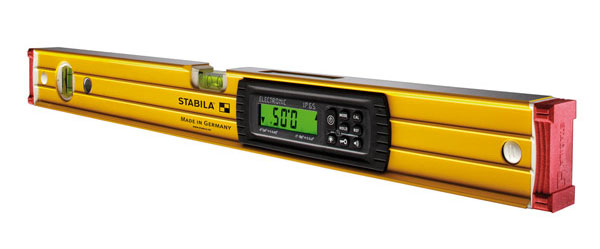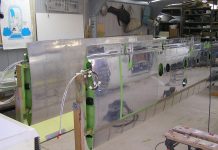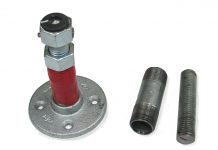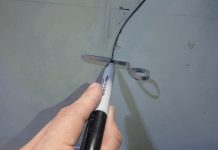This builder hint concerns the lowly instrument called the “level.”
No matter what kind of aircraft you are building, everything evolves from what is referred to as “level.” Since everything you do is based on an angle from level, a height from level or a parallel to level, it follows that the leveling instruments had better be putting out the correct information, or your whole craft will be carefully crafted from incorrect levels. The errors may or may not be large, but amateur builders have plenty of chances to make mistakes without adding incorrect angles. It compares to building a house: if the foundation is not level, the whole building will be skewed. On aircraft, it equates to twisted flight surfaces, which in turn produce excessive drag and lowered cruise speeds.
 Most builders purchase their leveling instrument from a tool or hardware store. They feel that a new level will always show a perfect reading and that any error is the fault of the user. I had a rude awakening recently that concerned the reliability of levels. I want to pass on this information, so that builders can eliminate error from excessive reliance on instruments that look high-tech but that lie through their teeth.
Most builders purchase their leveling instrument from a tool or hardware store. They feel that a new level will always show a perfect reading and that any error is the fault of the user. I had a rude awakening recently that concerned the reliability of levels. I want to pass on this information, so that builders can eliminate error from excessive reliance on instruments that look high-tech but that lie through their teeth.
I have a high-tech electronic level—the kind you could supposedly use to build a Stealth Bomber. I have learned not to trust it any further than you could throw an elephant. Even after what they call the “Super Set” procedure, it may say 0° when it is set one way and show 0.1° when ends are swapped. A fellow builder said that error was too small to worry about. Well! It is on our aircraft. A tenth of a degree extended out the length of a wing puts things way off.
I finally decided to purchase a good quality spirit level so I could check the zero reading on the electronic level and not have to wonder about it. After checking out all the various offerings, I noticed a beautiful spirit level with a built in laser. That should be great for shooting projected levels. So it cost a hundred bucks plus—nothing is too good for our GlaStar! Soon, I was shooting red spots all over the place.
Finally, I got around to checking out the zero against the electronic level. I set the spirit level on top of the electronic and shimmed the electronic level’s base until the spirit level displayed perfect level, 0°. The electronic level readout agreed. Then I turned the spirit level end-for-end and placed it back on top of the electronic level. To my surprise the perfect zero was history.
I returned this beautiful unit and purchased a “regular” spirit level. I checked until I found one that still indicated a perfect zero, when it was switched end for end. I then pocketed my returned cash and headed back to the “hangar” garage.
In my book, a good-quality spirit level is as accurate as an electronic any day and more so on some. However, they only read out 0°, 45° and 90°. Builders need to be able to work all the angles between 0° and 90°. Therefore, I believe every builder should have an electronic level. They are especially great for working “repetitive” angles between 0° and 90°. Just do not switch ends while you are doing it. If you want to set an angle with it, just be sure it is showing 0° on a level surface before you start, and again, the odds are better for repeatable accuracy if you do not switch ends. If there is any error, it will remain a constant during such checks.
In short, do not be dazzled by all those flashing electronic numbers. A super level can also make super errors. If you are aware of its possible shortcomings, it can be a very useful tool with which to build a great GlaStar or perhaps even a sleek Glasair.



